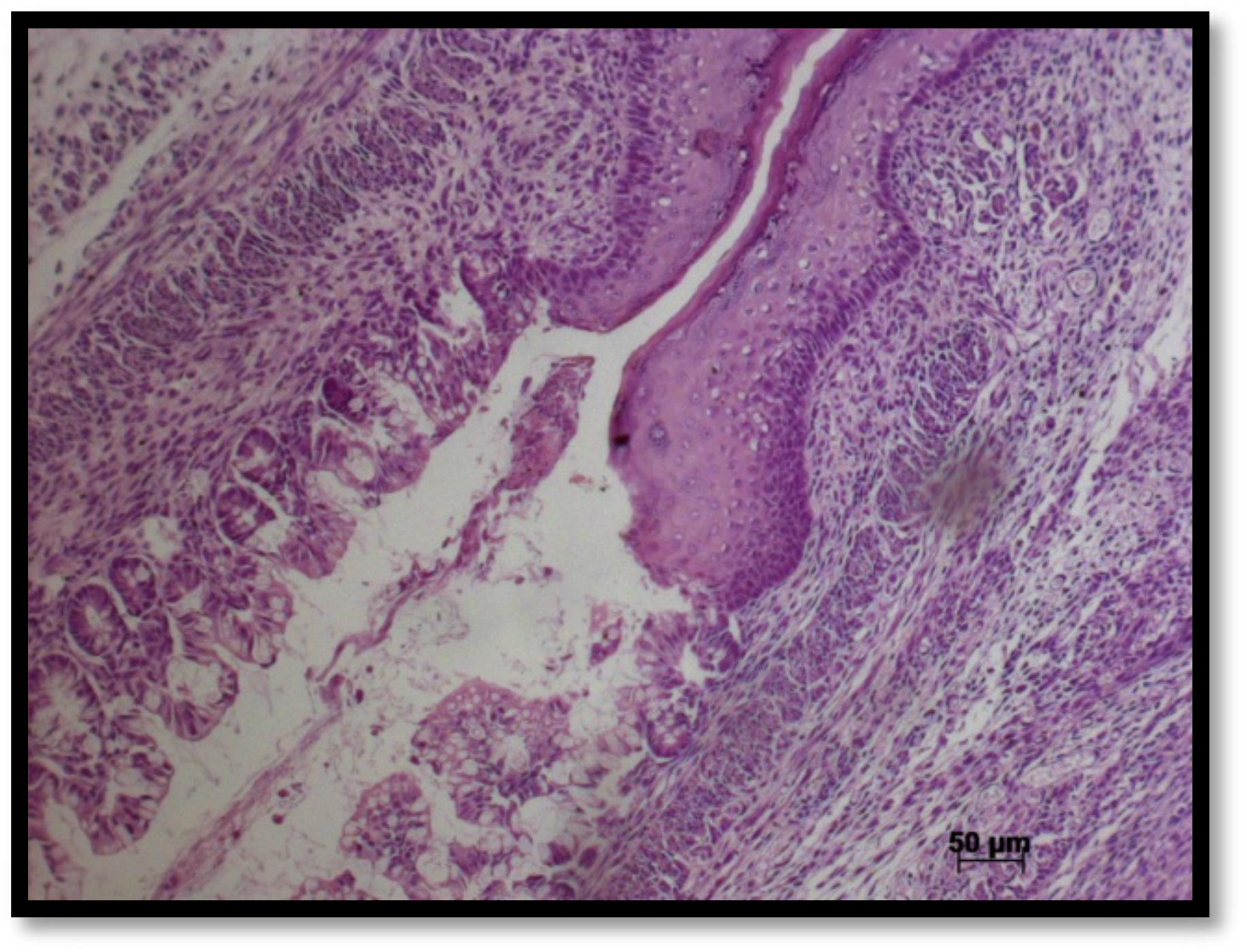PURPOSE:
To investigate the effect of folic acid (FA) in an experimental model of anorectal malformations (ARMs) ethylenethiourea (ETU) induced.
METHODS:
Eight female Wistar rats were divided randomly in two groups. Group A - ETU; Group B - FA+ETU; Dams from group B received daily, since two weeks before pregnancy to the end of pregnancy, FA (50mg/kg) by gavage. Dams from groups A and B, received 1% ETU (125mk/kg) by gavage on gestational day (GD) 11. Their fetuses were harvested by cesarean section on GD21 and were examined looking for ARMs. The thickness of anal stratified squamous epithelium (ASSE) and intestinal epithelium (IE) were analyzed. p<0.05*.
RESULTS:
One hundred and one embryos were harvested. The number of embryos; number of ARMs; mean statistical % (± SD) were determined to be, respectively: ETU - 49 [30;65% (±24%)] versus FA+ETU - 52 [1;02% (±3%)] (p=0.025). AMRs were significantly lower in FA+ETU group than in ETU group (p=0.025). The thickness (µm) of ASSE (± SD) and IE (± SD) were measured, respectively: ETU - [27.75 (±0.56) and 18.88 (±0.93)] versus FA+ETU - [28.88 (±0.61) and 21.11 (±0.16)] (p=0.001). The thickness of IE was significantly enlarged when FA was given (p=0.001).
CONCLUSION:
Folic acid reduces the number and enlarged the IE of ARMs ETU-induced.
Anal Canal; Anus, Imperforate; Ethylenethiourea; Folic Acid; Rats




